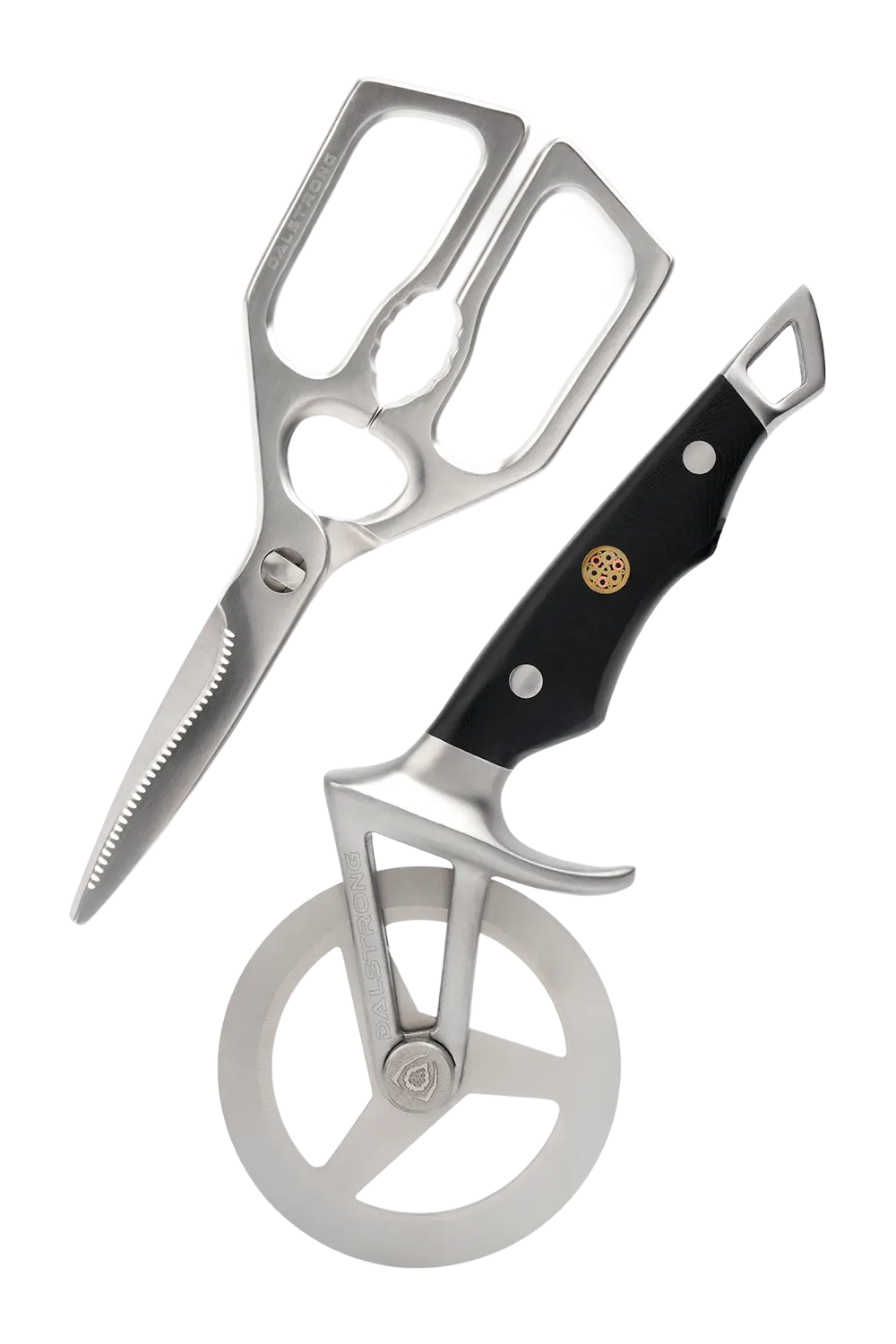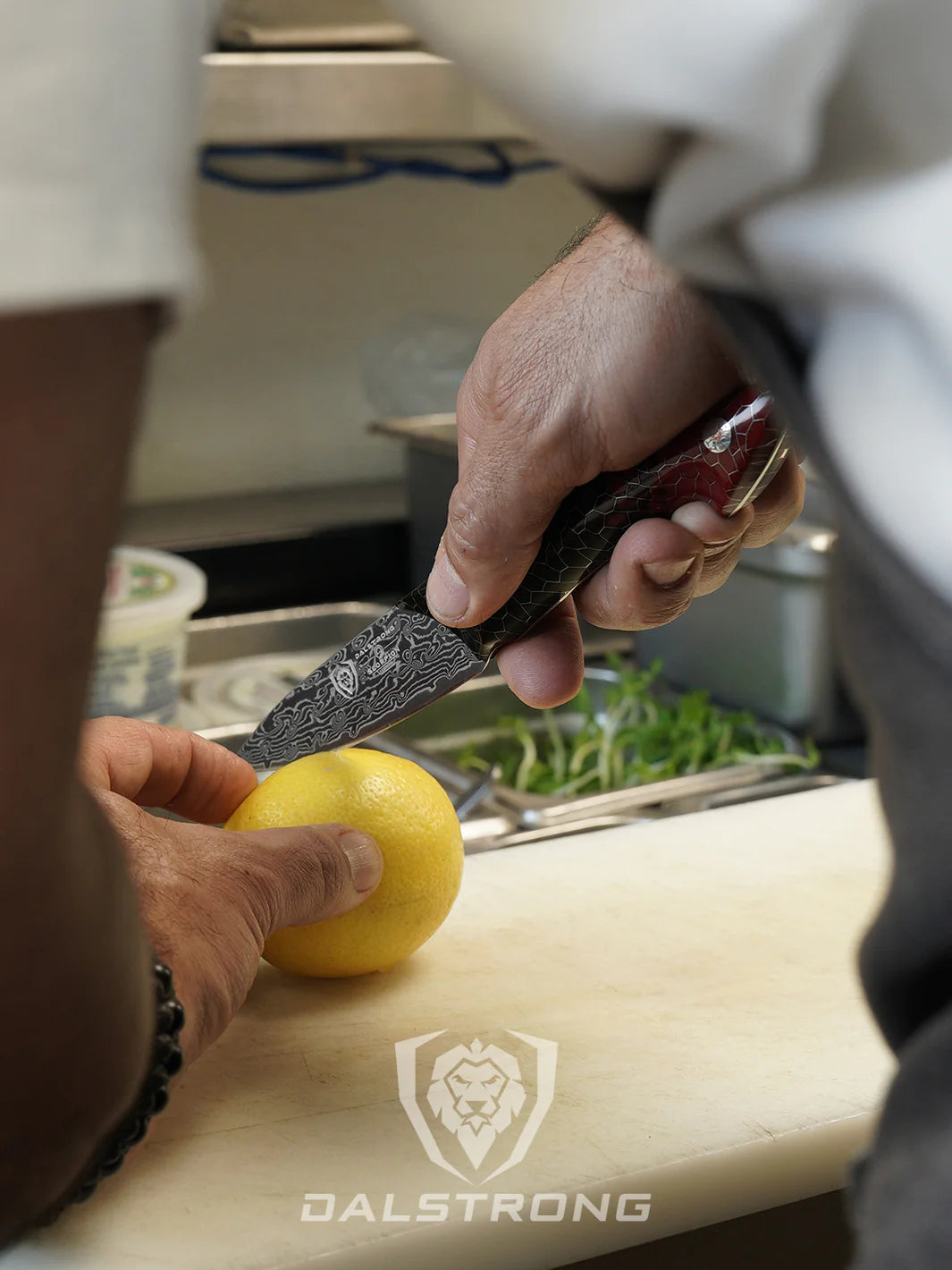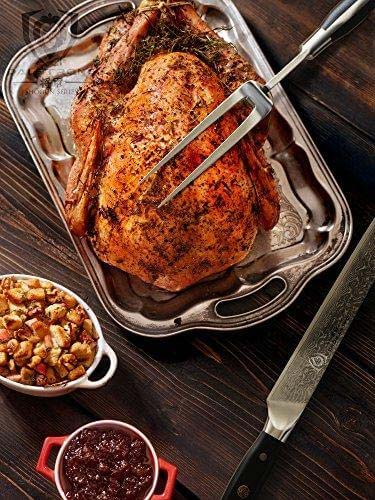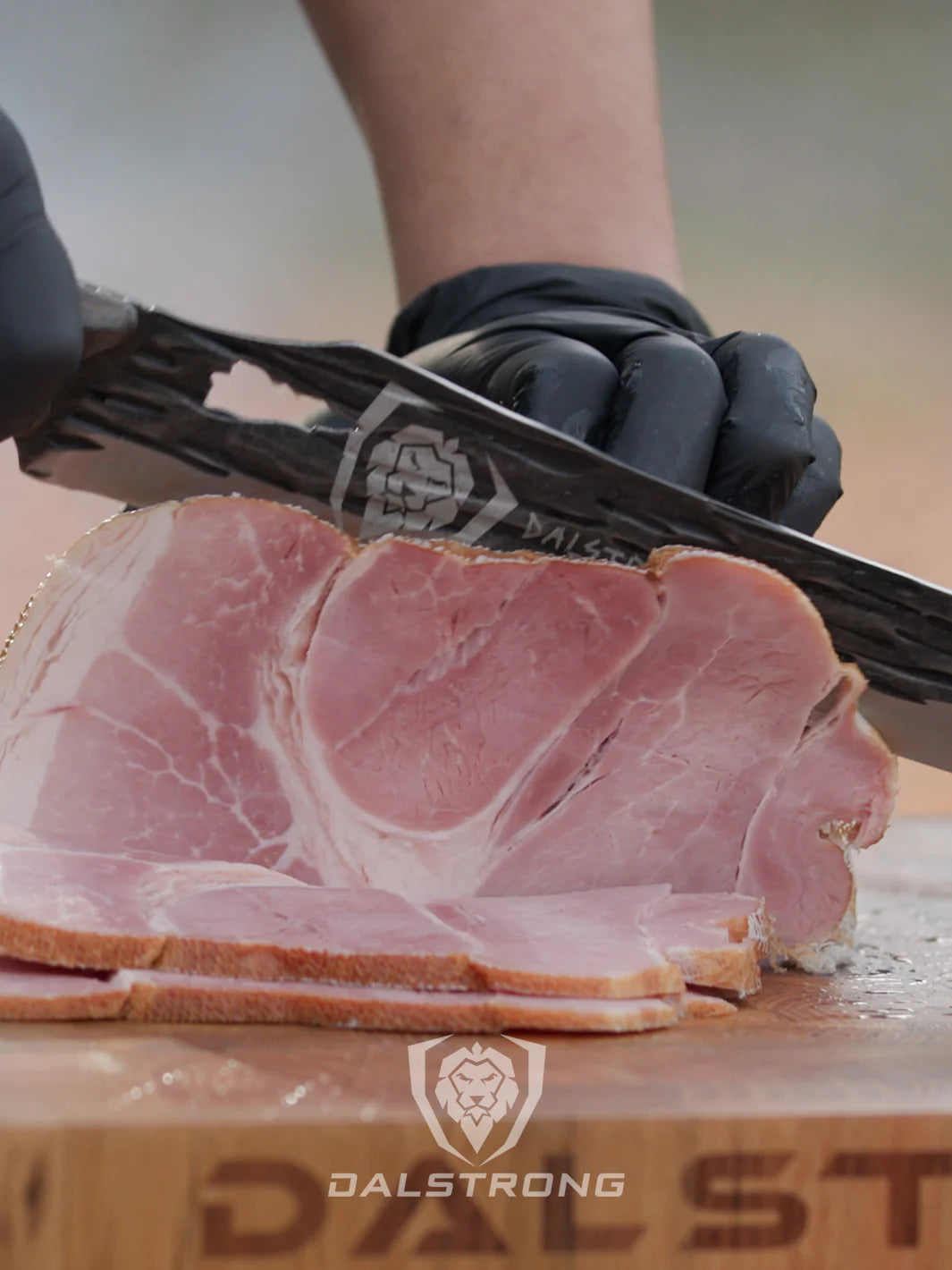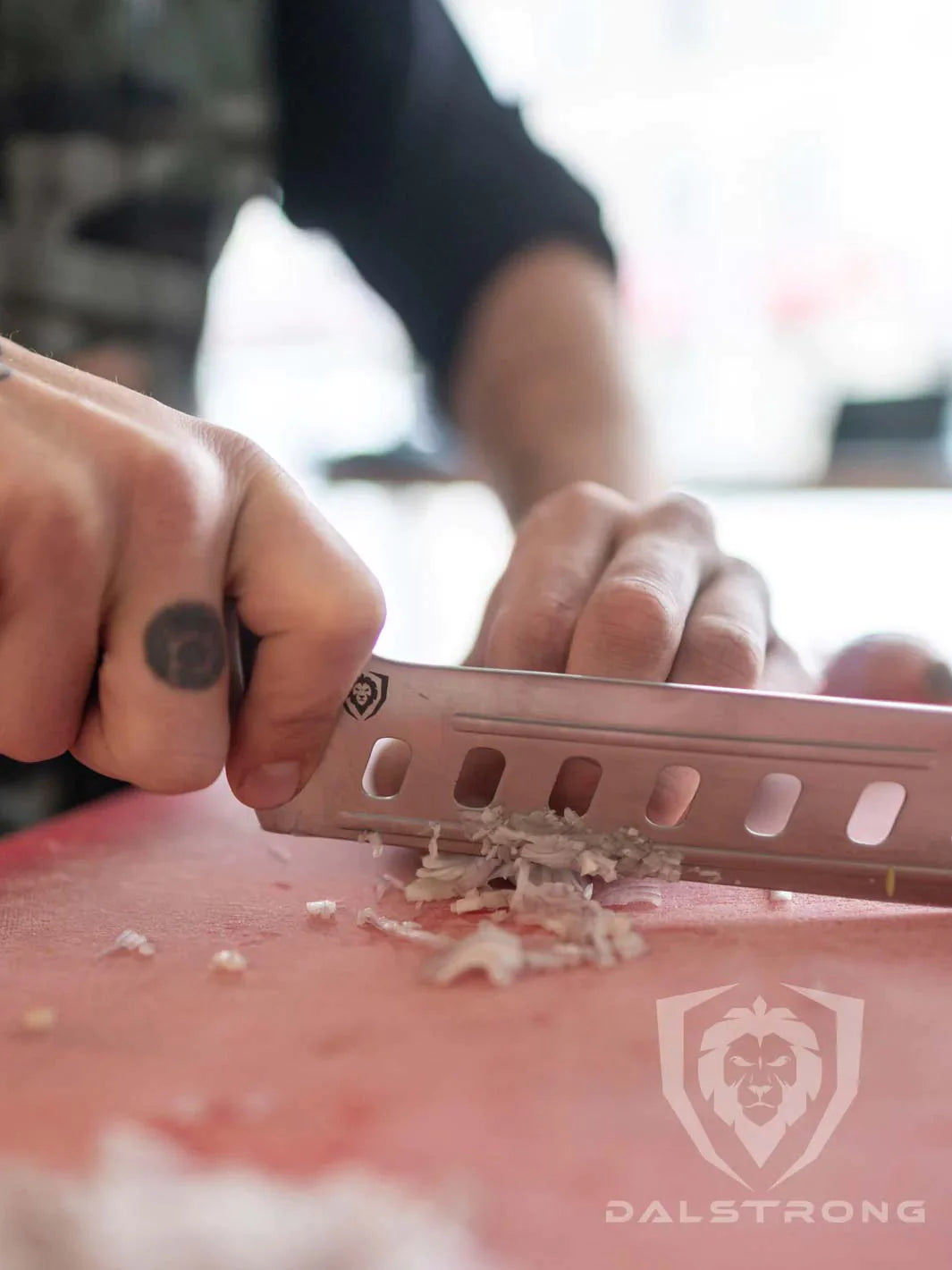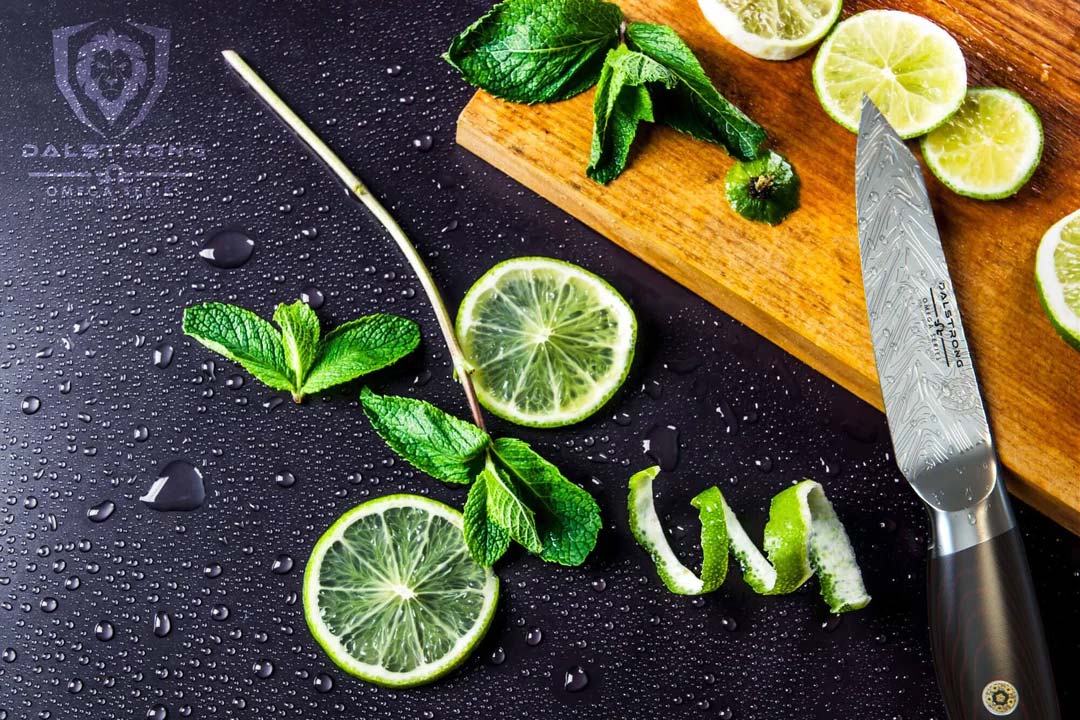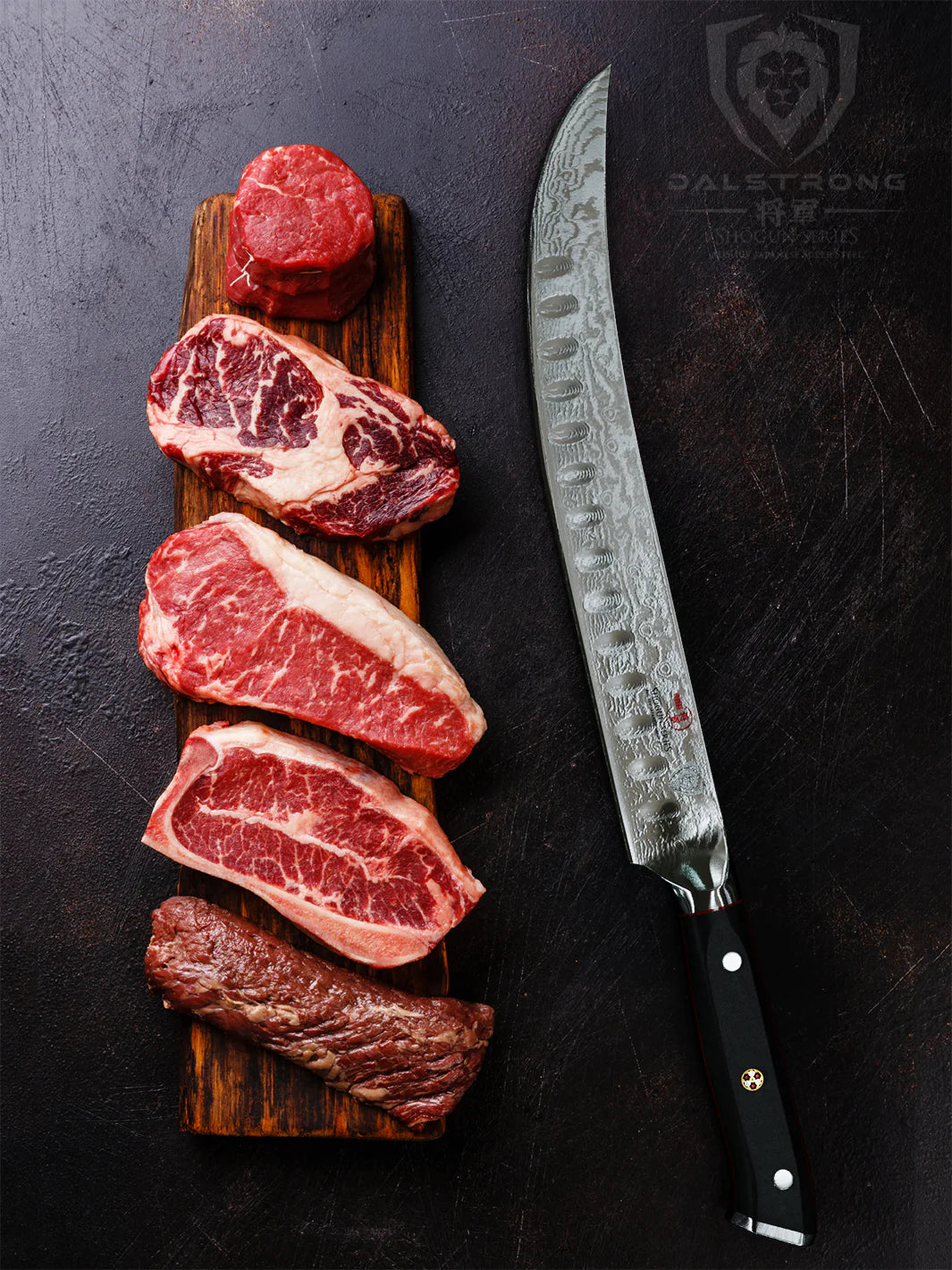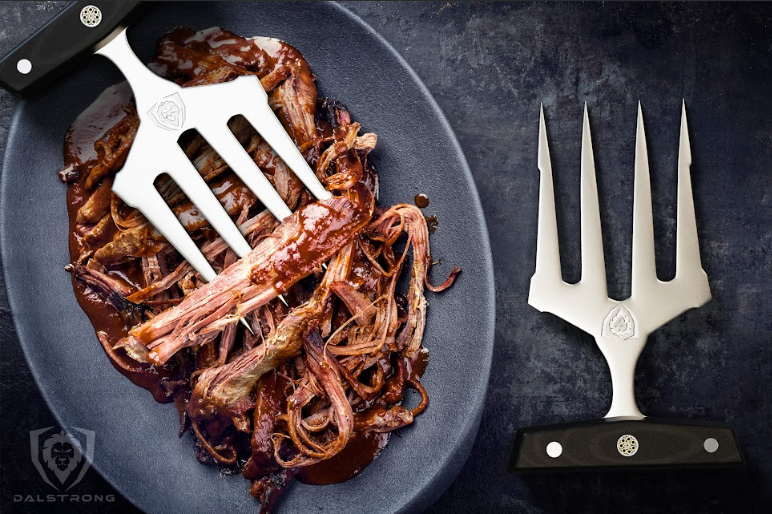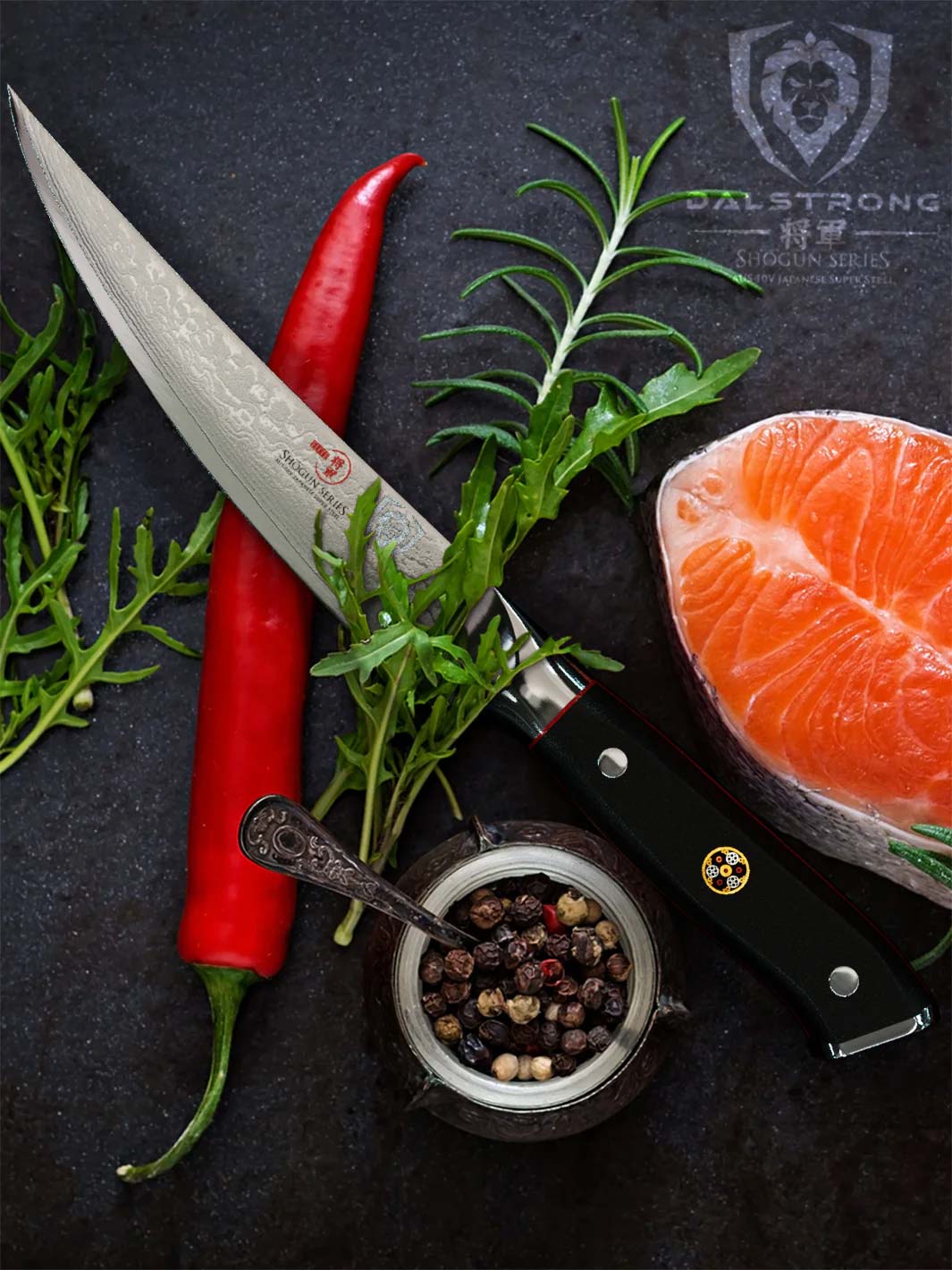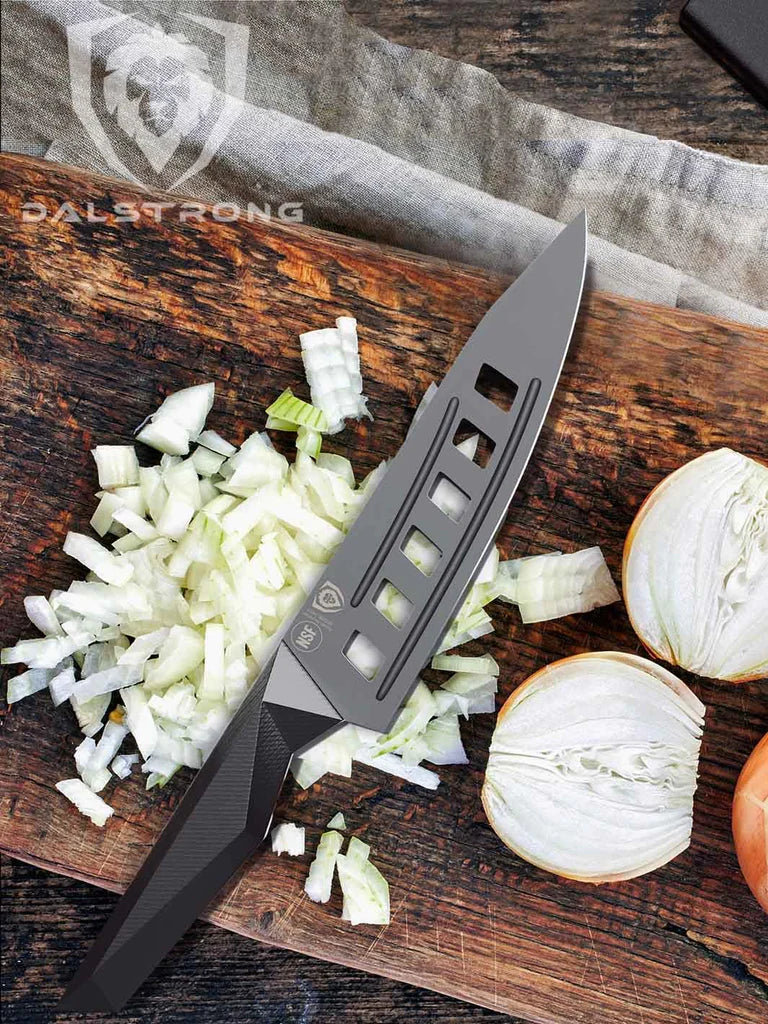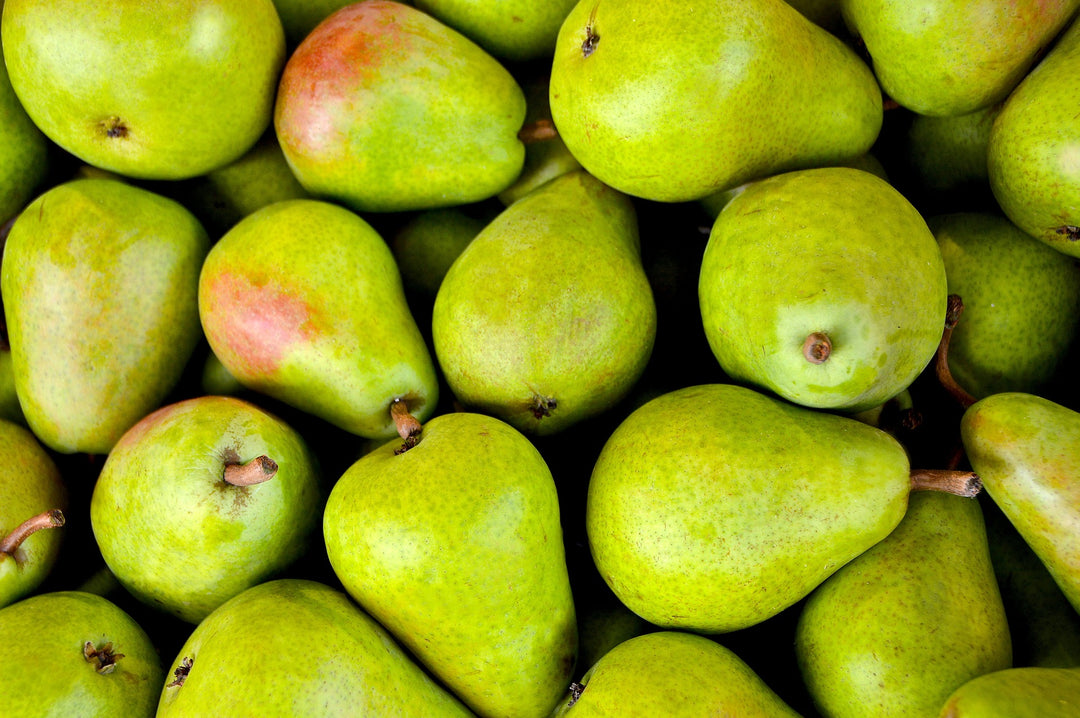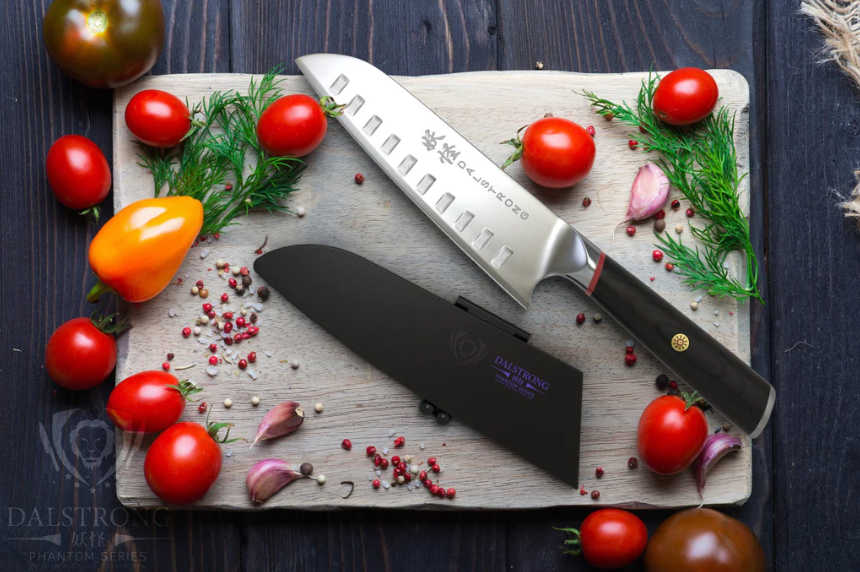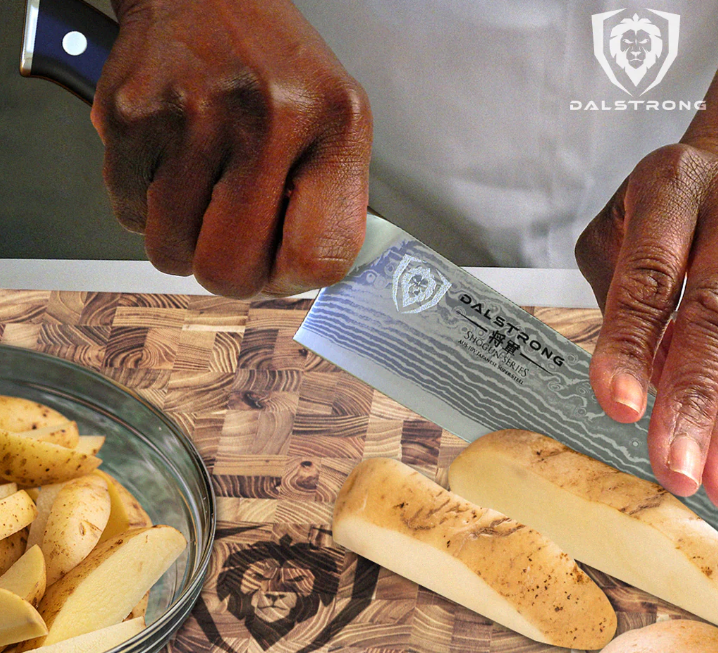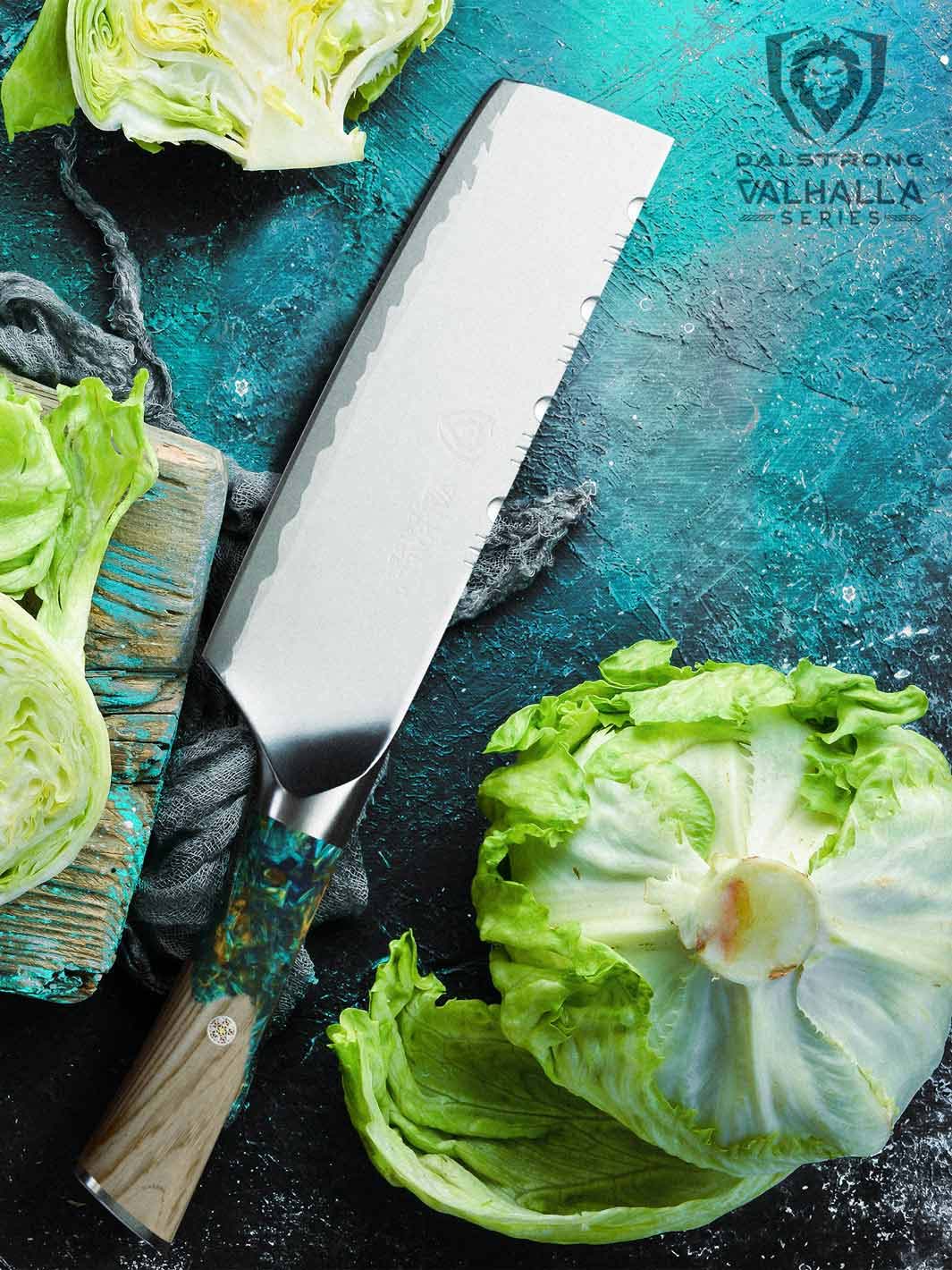How To Cut Brisket
How To Cut Brisket
Overview – How To Cut Brisket Once It Is Cooked
- Divide the brisket in half to separate the flat cut from the point cut.
- Dedicate a few minutes to find the grain in your brisket, slice against the brisket flat.
- Remove the fat cap if not trimmed to your liking.
- Take a sharp knife and slice against the grain at a 60º degree angle.
- Remove burnt ends away from your cooked brisket and serve as a snack if you'd like.
1. How To Trim A Brisket Before Cooking
 14'' Serrated Slicer | Gladiator Series | Dalstrong ©
14'' Serrated Slicer | Gladiator Series | Dalstrong ©
Brisket is a single cut of meat that usually requires 6 to 20 hours to cook. Before we get into the nitty-gritty of things, let’s quickly highlight the difference between corned beef and brisket, as they are not the same. Brisket meat is butchered and preserved, whereas corned beef is cured in brine.
Brine solution allows the meat to preserve its bright red color. If the meat you want to purchase hasn't been brined, it will always be labeled as beef brisket.
Pick a beef brisket that is about 15-17 pounds in weight, as it would cook evenly in the smoker. You also want to go for a brisket with a good amount of marbled fat. This is because the beef becomes tender as the fat breaks down quickly during cooking.
When you're at the grocery store or butcher's market, feel free to pick up the brisket and look at it from every angle before deciding the one you want to go with.
Step 1:
The night before your cook, rinse your brisket. Choose a knife for the trimming process – a boning knife is ideal. Then, you want to lay your brisket flat on the cutting board with its fat side up. Put your apron on before you start trimming past three stubborn and slippery types of fat from your meat.
- Leather skin-like fat.
- Waxy and dense fat.
- Soft/delicate fat.
Step 2
Cut the excess fat from the brisket. The more meat, the longer it takes to heat it to achieve the desired temperature from within.
Use the 'shallow cut' technique, to trim the brisket with your knife's blade. The shallow technique is where you make incisions less than an inch in width from where you want to trim.
Step 3
At a parallel angle, cut in a manner that allows you to hold the excess fat in one hand, while you trim with the other. The key is to be able to roll the fat upwards from the flat side towards the point side.
Step 4
Seasoning your brisket before it goes under the smoker will never penetrate the marinade more than ¼ inch. So, make sure you trim the brisket tightly. Remove all surface fat slowly. At this stage, you should take note of the direction your grain is going towards. Once your brisket is ready, you want to slice it across the brisket crosswise.
Flip over and repeat this process on the 'meat' side. Discard any excess fat unless you want to ground it up for some sausages.
Step 5
Once you've completed the process on the opposite side of the brisket, it's time to prepare a marinade before you put it in the smoker or cooker. If you’re a beginner, you can try the classic Worcestershire sauce as a marinade. It is the most common choice at Franklin Barbecue!
2. How To Cut Brisket After Cooking

Before you cut your beef brisket in the smoker, you need to ensure it is well-rested. Resting is crucial as it helps the succulent juices in your smoked meat distribute themselves evenly. Cutting your brisket before resting it for some time after taking it out from the smoker results in it losing moisture.
Step 1
Get your brisket knife out – ideally, this should be a thin slicing knife that has serrations along its blade. Make sure you have a cutting board that is durable and of high quality. This is essential before you get to slicing and carving. If the cutting board continues to slip or move around, it will result in sloppy slices of meat.
If you're not intending on eating or serving the entire brisket in one sitting, it isn’t beneficial to pre-slice it. When you have that figured, move towards the next step.
Step 2
Separate the meat while using your knife against the grain at a crosswise angle. This helps you cut through the tough muscle fibers and makes your meat more chewable. The point and flat have muscle fibers that go in different directions. So, cut the brisket flat, dividing it from the brisket point.
Step 3
If your brisket wasn't perfectly trimmed already, now is the time to make any adjustments. However, it is recommended to leave the fat cap on your brisket.
Step 4
Next, remove the tip – This is the overcooked bit of your brisket. You can chop it up and serve it as burnt ends.
Step 5
Now, start slicing from the smoked brisket flat. As you reach the brisket point portion, cut it in equal parts, lengthwise. This method will guarantee that you don't end up with tiny slices that cut halfway through towards the point.
Step 6
Cut the flat against the grain crosswise. The grain in a cooked brisket tends to run in different directions compared to when it was plain and raw beef.
There you have it! A flavorsome smoked brisket.
3. Best Temperature To Cut Brisket
 Slicing & Carving Knife 10" | Gladiator Series
Slicing & Carving Knife 10" | Gladiator Series
Smoked brisket requires a low yet steady internal temperature in the pit. Anywhere from 250º degrees Fahrenheit (121º degrees celsius) to 275º degrees Fahrenheit (135º degrees celsius) is doable. Brisket is a tougher cut than other parts of the cow – mostly because it is derived from just above the legs.
The connective tissues can be torn down in a cooker with steady heat and smoke. Otherwise, the collagen cannot be broken down. Slow cooking your meat in smoke breaks down collagen faster than other cooking methods.
Pellet Grill and Cooker Temperature
Your cooker/pellet grill needs to be humid, too. You can do this by placing a pan of water in your smoker to retain the smoke flavor and effect. Humidity slows down the evaporation of moisture and increases the rate of fat rendering and collagen breakdown. These processes can occur simultaneously if there is enough smoke in your cooker, saving you cooking time.
When the internal temperature reaches 150º degrees Fahrenheit (66º degrees celsius) halfway through the cook, remove the brisket. Get a sheet of butcher paper or foil to keep your brisket moist. Check your smoker or pellet grill to make sure the water has evaporated. The butcher paper or aluminum foil used to wrap your brisket will retain moisture, smoke, and flavor as you continue cooking it.
Lastly, set an alarm for your thermometer to sound at its final stage while your wrapped brisket cooks evenly to achieve a smoke effect. The internal temp should be no more or less than 203º degrees Fahrenheit (95º degrees celsius). Cooking brisket perfectly comes down to the temperature of your smoker.
That is all. Enjoy your sliced brisket!
4. Nutritional Information And Health Benefits Of Brisket

A brisket is a cut of beef that is derived from the front or underside of a cow. A whole chunk of brisket can weigh anywhere from 13 to 17 pounds, which is why it is divided into two portions – flat cut and point cut. As discussed in the article above, corned beef and beef brisket are not the same things.
While corned beef can be carb-heavy, unhealthy, and even calorie-laden, research shows beef brisket to provide numerous health benefits. USDA – United States Department of Agriculture categorizes flat brisket as a lean portion or cut of beef.
Protein
A brisket serving of 3-ounces contains 28 grams of protein. That is 51% of the recommended daily intake of protein. A brisket also has amino acids that are beneficial for your body. Diets that are inclusive of lean protein such as beef briskets aid in weight loss.
Fat
Containing 6 grams of total fat in a 3-ounce serving, the USDA recommends beef briskets in diets. If eaten in moderation, brisket meat meets USDA’s specifications. A fatty acid that is found in beef may even prevent diseases and conditions such as cancer cell growth, high cholesterol, and the prevention of diabetes.
Vitamins
A single serving of beef brisket contains a significant amount of vitamin B such as B12 and B6 – vitamins needed for energy, as well as a consistent and healthy bodily metabolism. You would have to eat 8 portions of 3-ounce breast chicken servings to find the beef equivalent in terms of nutritional value!
Minerals
Smoke beef brisket has a combination of zinc, iron, and phosphorus. Beef brisket is a great meal for those suffering from zinc deficiency since this meat nourishes your body with 38% of the recommended daily requirement. It even provides you with 14% of iron.
5. The Best Knives To Trim And Slice Brisket
Slicing Knife
Slicing knives and trimming knives are two completely different tools. However, both are essentials to slice brisket.
For slicing, you should opt for a knife that has a long blade – 8" inches to 10" inches is ideal. This minimizes the front and back motion. The best slicing knives have a minimum of 12" inches of the blade. If you can find a slicing knife that has a blade made of high-carbon stainless steel, it is ideal. These knives can also be easily sharpened.
The blade on your slicing knife should be thin enough to slice and not shred. If your slicing knife has a scalloped blade, nothing like it. A scalloped blade has decreased friction and a clean slicing process, thanks to its non-stick properties.
Trimming
As for trimming, you should pick a knife that has a curved blade. This helps a lot to trim out any of the three types of excess fat while locking in the brisket’s flavor. A knife with a curved blade or tip will allow you to trim without losing out on any meat along with it. A trimming knife will be thin and ultra-sharp to help you achieve the desired tenderness.
Ideally, the handle on slicing and trimming knives should be impervious to moisture, heat, and cold. It should be ergonomic in its shape and provide you with a comfortable grip.
You can never go wrong with a Japanese stainless steel blade. This steel allows your knife to retain its sharpness and edge retention. If you don't want to go through the chore of honing/sharpening your knife, protect it with a sheath.
6. Dalstrong's Recommended Carving Knives
1. Carving Knife & Fork Set 9" Gladiator Series
This carving knife and fork set from the Gladiator series help achieve perfect briskets and roasts. Designed with cutting-edge technology, this knife is made with premium materials. It features a full-tang and rivet to secure the meat on your cutting board and prevent it from slipping and sloppy slices of meat.
Pros:
- German Thyssen Krupp steel that is hardened at 56+ Rockwell.
- Low in maintenance and cleans easily.
- Satin finish blade for a sleek appearance at your pellet grill or cooker.
- Hand-sharpened to 14-16º degrees on each side for a precise brisket slice.
Cons:
- If you've got a brisket that weighs more than 15 pounds, the blade's length may not work as efficiently to give you uniform and thin slices of brisket meat.
- If you prefer a carving knife and fork set with a stainless steel handle, this may not be for you.
2. Slicing & Carving Knife 12" Phantom Series
Brisket knives from the infamous Phantom series are ingenious and versatile – Just how we like them. This slicing and carving knife is mercilessly sharp and yet again, honed by professional craftsmen to 13-15º with enhanced hardness, corrosion resistance traits, and flexibility.
This slicing and carving knife makes a powerful statement while resting on the cutting board beside your cooker. It is carefully engineered and designed with ice-tempered and high-carbon Japanese AUS-8 steel at 58+ Rockwell.
Pros:
- The blade has high amounts of chromium for a stain-resistant body.
- A powerful tool that is low in maintenance.
Cons:
- If you’re getting your grip around slicing and carving knives, a 10” inch blade would work better for you.
- It has a rounded tip which could be an inconvenience if you’re on the lookout for a narrow tip.
3. Slicing & Carving Knife 8" Gladiator Series
This 8" inch slicer is designed to cater to your bulkiest briskets. It is great for prime rib, turkey, and salmon. You can get uniform and thin slices with a single stroke. It is precision-forged, ultra-sharp, and made with high-carbon, German ThyssenKrupp steel at 56+ Rockwell.
This knife has a stain-resistant and wide blade
Pros:
- Ergonomic handle for comfortable grip and dexterity.
- Triple-riveted for maximal durability.
- Low in maintenance and BPA-free protective PerfectFit sheath by Dalstrong.
- The full tang gives you excellent knuckle clearance.
Cons:
- If you're looking for a knife that has more artistic appeal, then this may not be the right knife for you.
- The blade length may be slightly short if your brisket weighs more than 15 pounds.
4. Extra-Long Slicing & Carving Knife 14" Shogun Series
This ‘extra-long’ slicing and carving knife makes slicing brisket look like a walk in the park. It has a traditional narrow tip, allowing you to create long and thin slices of brisket meat. Earning you a razor-sharp edge and scalpel-like sharpness. Featuring Dalstrong’s Tsunami Rose blade pattern, it is a knife you want to have in your kitchen.
Pros:
- Rust and corrosion-resistant cladding to make your slicing and carving knife last longer.
- Military-grade G10 handle for the durability of a lifetime.
- This set of knives has an 8-12º degree angle on each side.
Cons:
- Intimidating blade length for the novice.
- The price could be out of pocket for you.
5. Spanish Style Meat & Ham Slicer 12" Shogun Series
This Spanish meat and ham slicer is the perfect hybrid for your brisket. This knife makes smoking brisket in your backyard an easy process. This slicer is made with ultra-premium high-carbon Japanese stainless steel with 67 layers of Damascus cladding.
Pros:
- Military-grade G10 handle for durability and longevity.
- Ultra-sharp blade for edge retention.
- Hardened at 62+ Rockwell.
Cons:
- Could be out of budget for some folks.
- If you want to opt for a more traditional route, this slicer may not be the one for you. But, might I suggest a cleaver knife.
7. Frequently Asked Questions
Do you cut brisket with or against the grain?
You always cut the brisket crosswise from the grain to tear through tough muscle fibers and collagen.
What is the correct way to slice a brisket?
The correct way to slice a brisket would be to trim any excess fat layer from your flat and point side. Then, you should start trimming from the flat side, moving towards the point side. This is to ensure that the meat isn’t oddly shaped.
How do you know the grain of a brisket?
The grain of a brisket runs in different directions once partially or fully cooked. You need to dedicate a few minutes with utmost concentration to figure out the grain of your brisket. You can spot them by looking for a series of lines and rubber bands in your meat.
How do you cut brisket for beginners?
Separate your packer brisket into two parts, flat cut, and point cut. Then, trim your meat and remove any excess fat, identify the grain, and slice from the flat cut moving at an upward angle towards the point cut.
Shop Dalstrong Slicing & Carving Knives Today
Written by Ananya Tiwari
Ananya loves the fine things in life. When she isn’t penning down poetry or song lyrics, she spends her time cooking and creating recipes while also enjoying new cuisines.




















































































































